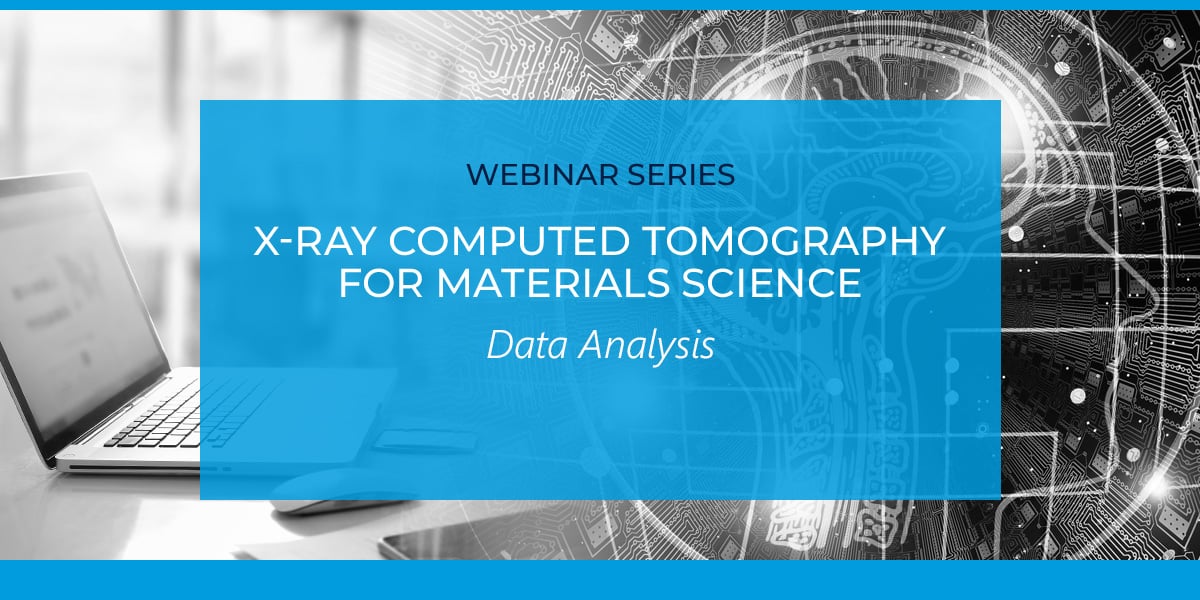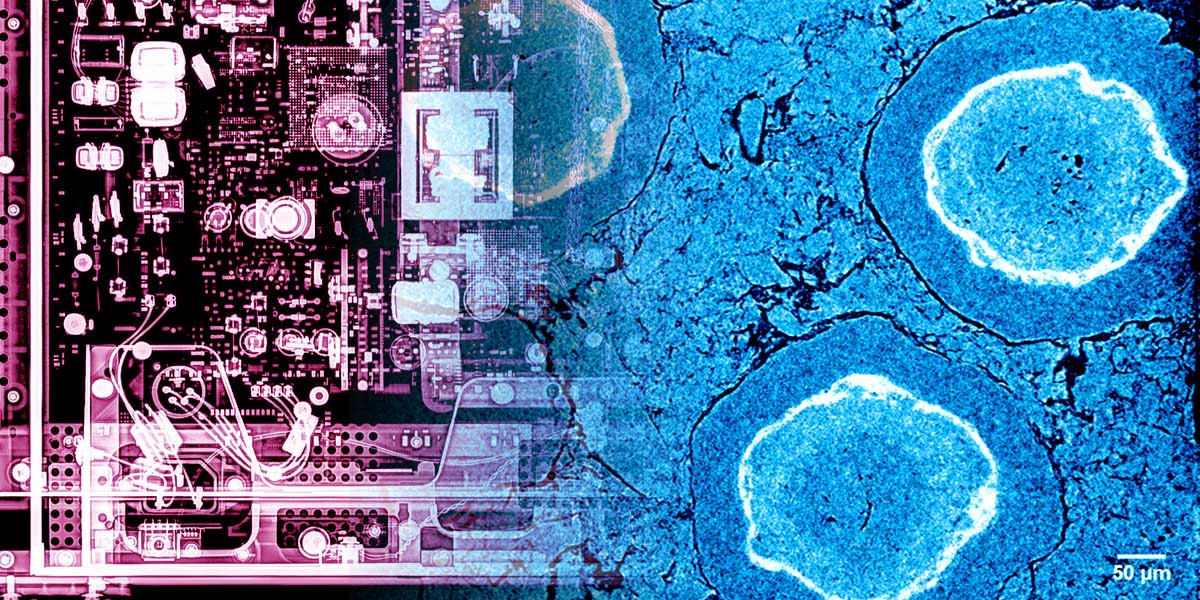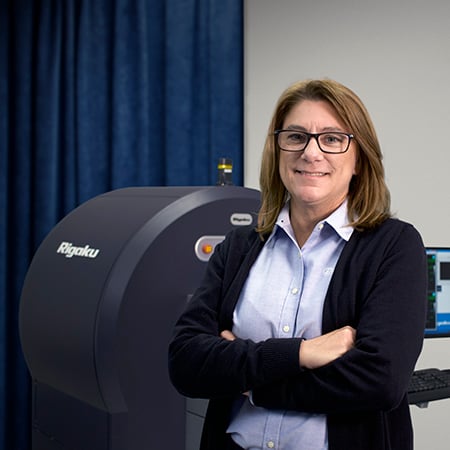Analysis Software
Rigaku X‑ray CT scanners are compatible with most software tools for image processing, segmentation, and quantitative and dimensional analyses using X‑ray CT.
Recommended software
Rigaku CT scanners work with various visualization and analysis software packages. Here are some recommended commercial and free software tools.
| Commercial | Dragonfly | VG STUDIO | digiM I2S | AVIZO | GeoDict |
| Manufacturer | Object Research Systems | Volume Graphics (a company of Hexagon) | digiM Solution LLC | Thermo Fisher | Math2Market |
| Features |
An excellent solution for materials and life science with an easy-to-use deep learning segmentation module. |
The de-facto industry standard of CT metrology (GD&T and general dimensional analysis). PTB (Physikalisch-Technische Bundesanstalt) and NIST (National Institute of Standards and Technology) have tested and verified their algorithms. |
A completely cloud-based solution with data storage and data management service. Applied to various simulation studies in the pharmaceutical industry. |
Object-oriented architecture for complex operations and flexibility. Can be configured to cover a wide range of needs from materials science, metrology, and simulations. |
Extended collection of simulation modules for filtration, digital rock, batteries, etc. |
| Open-source | Fiji (ImageJ) | 3D Slicer | Tomviz |
| Founder |
Open-source A project of Wayne Rasband, with the help of many contributors. It was initially developed in 1997 as a cross-platform version of NIH Image. |
Open-source |
Open-source Founded by Marcus D. Hanwell and Utkarsh Ayachit at Kitware, Inc., David A. Muller at Cornell University, and Robert Hovden at the University of Michigan under DOE Office of Science contract DE-SC0011385. |
| Citation | |||
| Forum |
|
||
| Features |
Free and no high-end computer is required. A large user community. |
Free and reasonable 3D rendering and segmentation are available. |
Free and good 3D rendering and segmentation are available. |
Webinars, workshops, and blog articles about X-ray CT analysis software
Dragonfly
- Virtual workshop: CT Data Analysis Techniques Using Dragonfly Part 1
- Virtual workshop: CT Data Analysis Techniques Using Dragonfly Part 2
- Ask the Expert webinar: Deep Learning Image Segmentation - Practical Knowhow
- Blog article: CT Analysis Software Product Review: Dragonfly by ORS
VGSTUDIO
- Ask the Expert webinar: Voxels to Mesh Data to Simulation – How to Use CT for Metrology and Simulations
- Blog article: CT Analysis Software Product Review: VGSTUDIO by Volume Graphics
DigiM I2S
- Ask the Expert webinar: Advancing Drug Development with High-resolution X-ray CT - Transformation of Decision Making with Digital Assets
- Blog article: How Should I Manage X-ray Tomography Data? – The Danger of Relying on Hard Drives and How to Avoid Costly Problems
GeoDict
- Deep Dive virtual workshop series
- Ask the Expert webinar: Digital Rock Physics – When and How to Use It
- Ask the Expert webinar: Filtration Simulation – How to Make the R&D Cycle More Efficient
ImageJ
- Virtual workshop: CT Data Analysis Techniques Using ImageJ
- Virtual workshop: Viewers Choice - CT Data Analysis Techniques using ImageJ
- Virtual workshop: Processing Images Using ImageJ
- Virtual workshop: Refining Segmentation Using ImageJ
- Virtual workshop: Demystifying Reconstruction Using ImageJ
- Mini Tutorials - X-ray CT Explained with ImageJ
How do I choose the right software?
We use Dragonfly, VG STUDIO, GeoDict, and digiM I2S, and recommend them depending on your CT analysis needs.
Dragonfly is a relatively inexpensive and easy-to-use yet very powerful software. It is our number one recommendation for materials and life science CT data analysis. Its segmentation wizard makes deep learning image segmentation accessible to beginners and often eliminates the headache associated with difficult image segmentation. You can use it for most materials science and life science applications, such as analyses of phase volume ratio, grain size distribution, fiber orientation, porosity, pore network, coating thickness, etc. They also offer a free non-commercial license.
VG STUDIO is the de facto industry standard for metrology applications, such as geometric dimensioning and tolerancing (GD&T) analysis or nominal (CAD) versus actual (CT) comparison. Their algorithms have been tested and verified by PTB (Physikalisch-Technische Bundesanstalt) and NIST (National Institute of Standards and Technology). They also have comprehensive automation packages for process control.
GeoDict is one of the most advanced simulation tools for permeability calculation, airflow simulation, etc.
One thing to keep in mind is that all these tools require a high-end workstation to run properly. If you don't have a compatible computer yet, consider contacting us or the software manufacturer and ask for an online demonstration to start with.
If you don't want to deal with the maintenance of expensive computers and prefer an entirely cloud-based solution, DigiM I2S (DigiM Solution) offers that. DigiM also offers data storage and management services. If you anticipate collecting tens and hundreds of TB data, their data storage service might come in handy.
Webinar X-ray Computed Tomography for Materials and Life Science - Data Analysis
Learn how X-ray CT data analysis works.

Blog article How to Get Started with X-ray CT Image Analysis in 3 Steps
See three simple steps to get started with CT data analysis.


Blog article 7 Things to Consider When Buying a Computer for CT Image Processing
Learn how to choose and configure the right computer for your CT data analysis.


Contact Us
Whether you're interested in getting a quote, want a demo, need technical support, or simply have a question, we're here to help.

Subscribe to the X-ray CT Email Updates newsletter
Stay up to date with CT news and upcoming events and never miss an opportunity to learn new analysis techniques and improve your skills.
